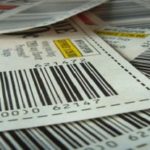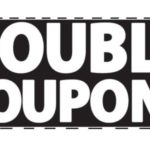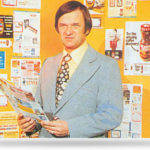
Coupons in the News turns one this week. And in honor of the anniversary, we’re making the case that “couponing” as we know it is also marking a milestone – 40 years, to be precise.
If you need to catch up on the premise, check out yesterday’s story here (read: “It’s the 40th Anniversary of Couponing. No, Really!”).
Now, on to part one, as we turn back the calendar 40 years. What’s so special about 1973 when it comes to coupons, anyway?
People were using coupons way before then, of course. But clipping coupons was just a simple way to save some cash. The act of using coupons wasn’t anything like the game we call “couponing” today, until Richard Nixon helped to invent it.
No, the president was not an extreme couponer – though that might have been fun to see. But his actions helped pave the way for the creation of a system that coupon users soon learned to take full advantage of.
In the industry, it’s known as trade promotion. As consumers, we see it in stores as “high-low pricing”. And as couponers, we’ve learned that the system allows us to wait for a sale, combine coupons with deep discounts, and get stockpiles full of products for next to nothing.
And it all started when gas prices, along with the prices of most everything else, were soaring. In 1971, in a surprise move aimed at combating that inflation, President Nixon announced what turned out to be the first in a series of wage and price controls. The cost of groceries and other consumer goods, which many had complained were getting out of hand, were frozen in place. As soon as the price control period ended, though, many prices shot up, only to be subject to another round of controls later on.
By 1973, grocers and manufacturers were starting to tire of the cycle, and decided to do something about it. Consumer packaged goods companies simply jacked up their list prices to astronomical heights, so the next time government controls were put into place, there would still be plenty of room for them to maneuver on price.
Just as you would never pay the “manufacturer’s suggested retail price” for anything today, most shoppers at the time didn’t pay the artificially-inflated list price for their groceries. Grocery stores paid the list prices to the manufacturers, but then got much of the money back in the form of rebates, or trade allowances.
The grocers could then use that cash back to help pay for promotions unlike any that shoppers had seen before – half price, buy one get one free, 10 for $10, weekly circulars full of deeply-discounted specials. And when an item wasn’t discounted, the store could raise the price higher than it used to be, but still nowhere near the list price that the manufacturer was charging.
The era of “high-low pricing” had begun.
It’s strange to think that the biggest influence on the rise of couponing as we know it today, had nothing to do with coupons at all. But price controls, trade promotion, high-low pricing – it was all the beginning of a game, that coupon users learned to play, and win. Ask any coupon expert, and they’ll point out that the key to saving money with coupons is not just using them, but holding onto them until an item is on sale. That’s when you really save. And that double discount is what helped turn mere coupon use, into “couponing”.
So thanks, President Nixon. You may have given us Watergate, but you also gave us stockpiles full of free toothpaste.
Coming tomorrow: Newspapers Go Cuckoo for Coupons – how the Sunday paper became a coupon bonanza.










